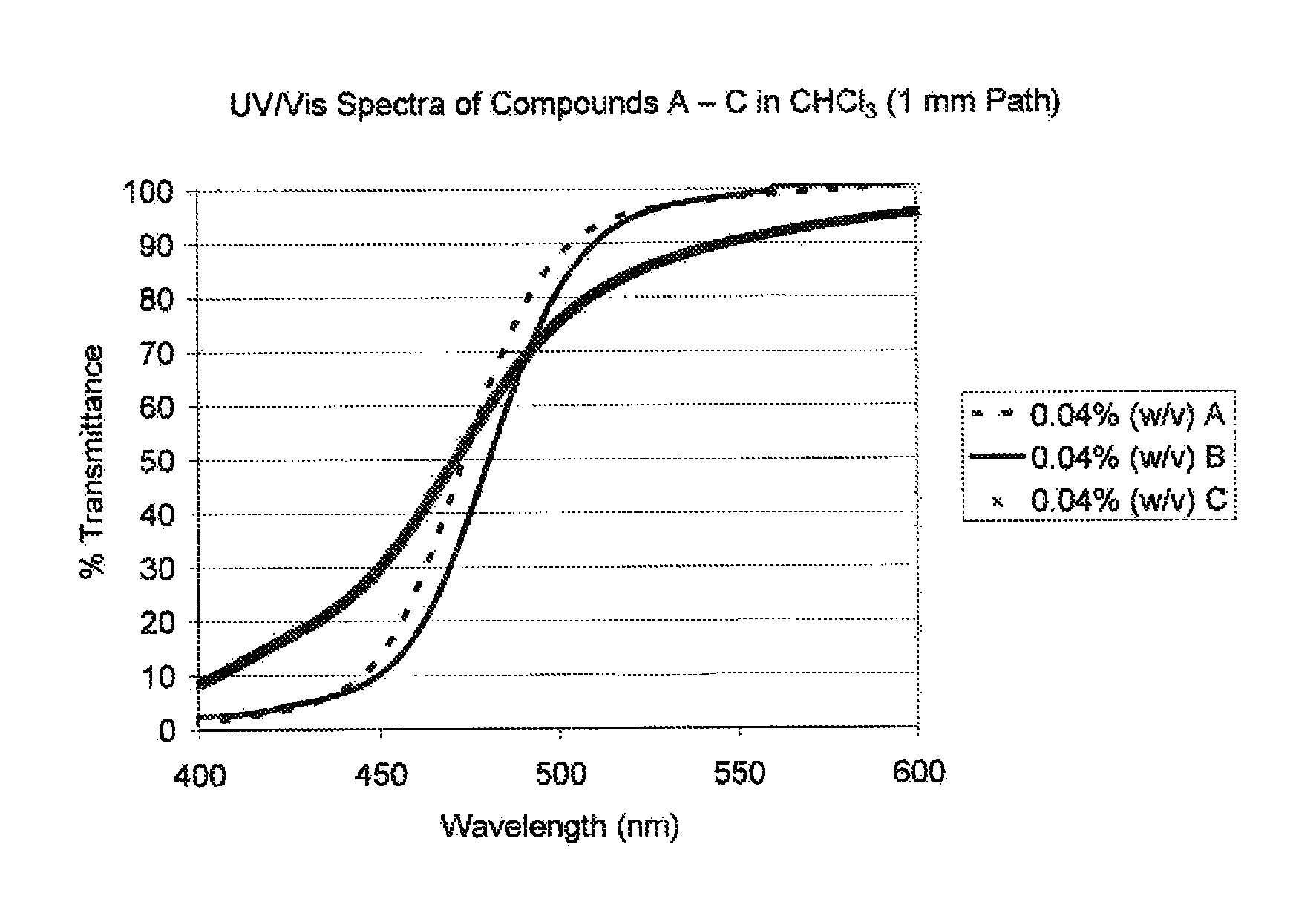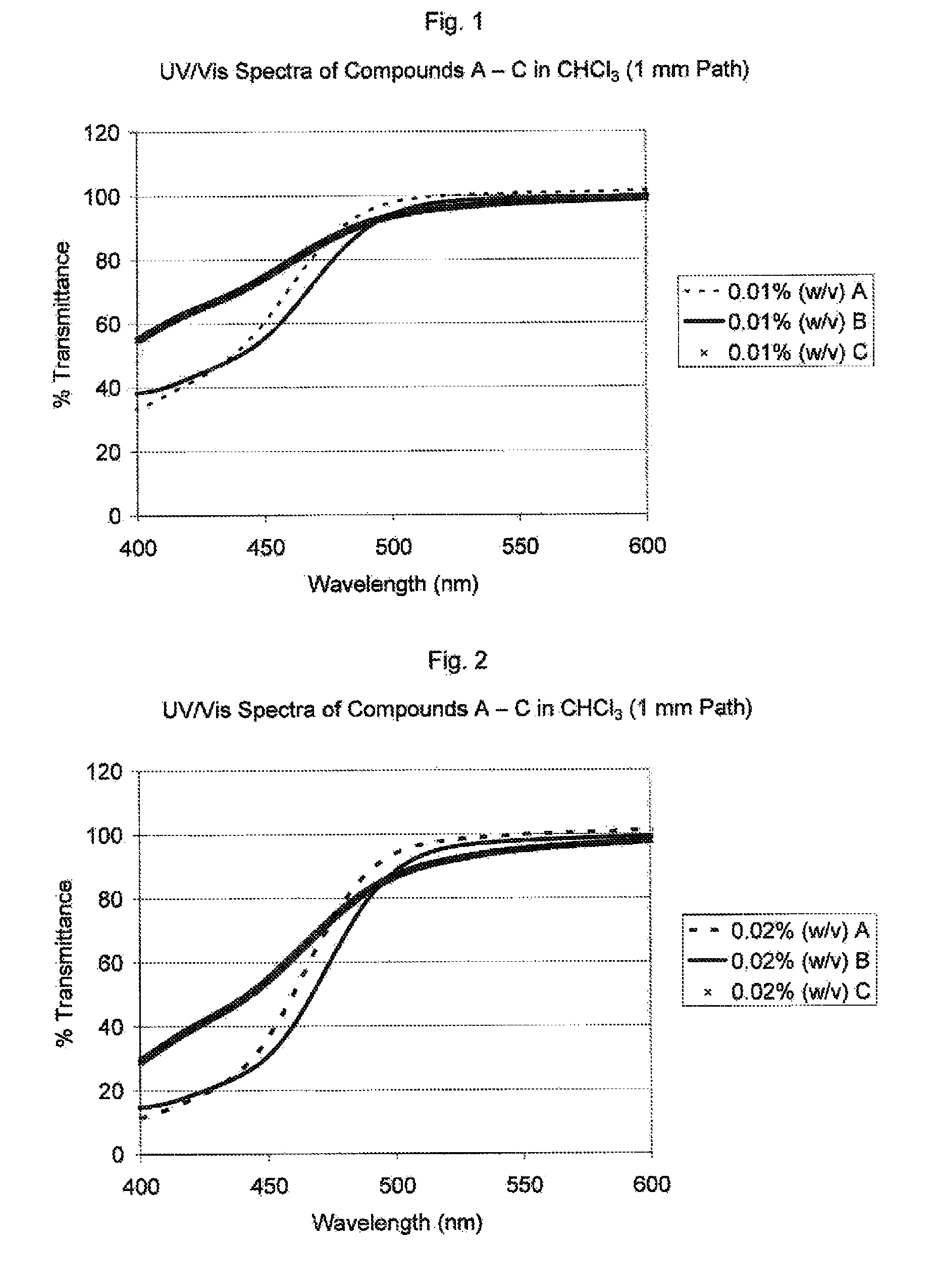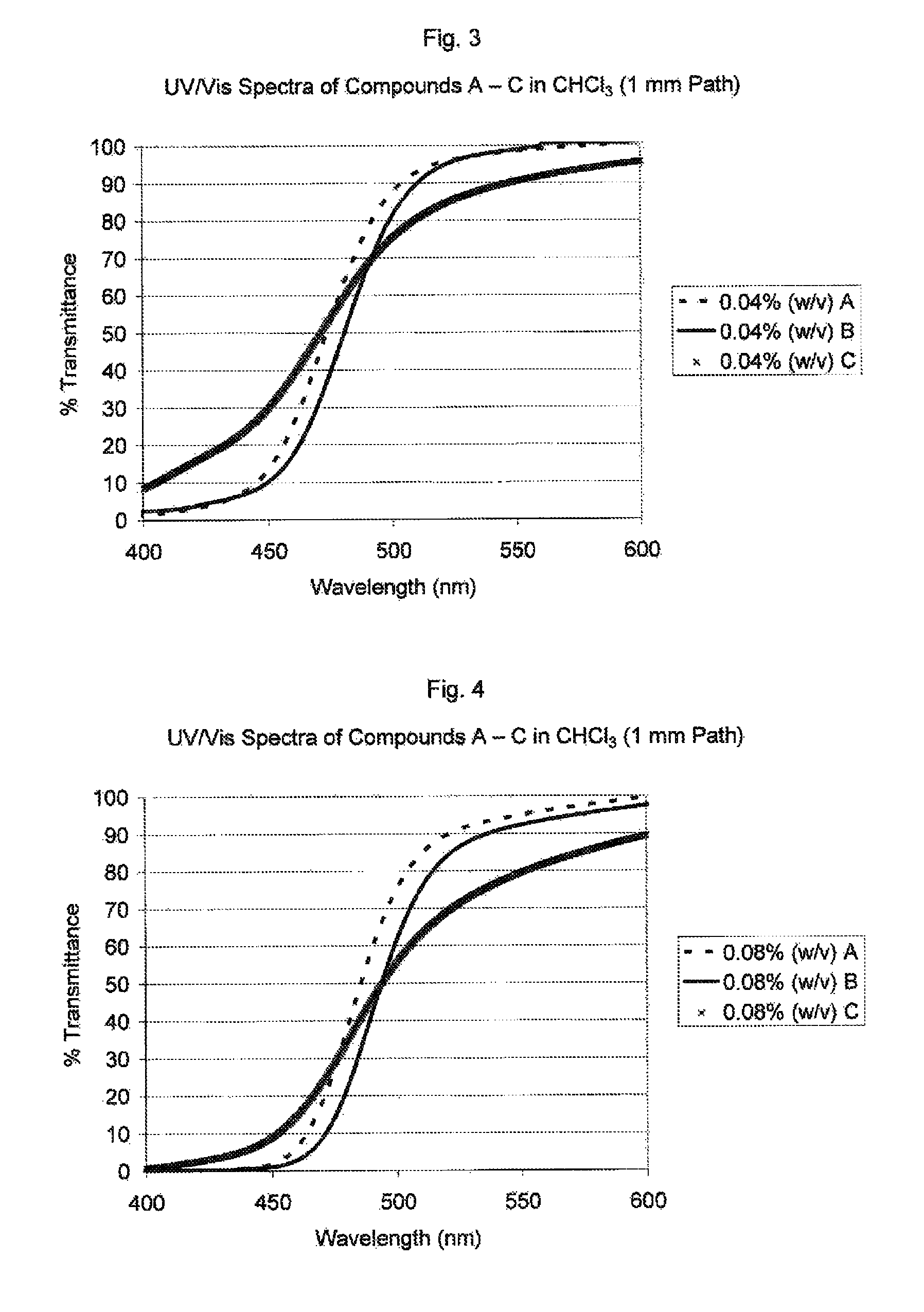Visible light absorbers for ophthalmic lens materials
a technology of ophthalmic lens and absorber, which is applied in the preparation of azo dyes, instruments, optical elements, etc., can solve the problems of loss of visible light blocking activity in implants and lens optical clarity reduction
- Summary
- Abstract
- Description
- Claims
- Application Information
AI Technical Summary
Benefits of technology
Problems solved by technology
Method used
Image
Examples
example 1
[0055]Synthesis of 2-(hydroxymethyl)-4-methyl-6-((3,4,5-trimethoxyphenyl)-diazenyl)phenol. In a 250 ml round bottom flask equipped with a magnetic stirrer was added 9.06 g (49.4 mmol) 3,4,5-trimethoxyaniline (Aldrich, Milwaukee, Wis.), 21 ml concentrated HCl(aq) (J. T. Baker), 100 ml absolute ethanol, and 100 ml deionized water. Sodium nitrite (3.63 g, 52.6 mmol, Sigma-Aldrich) in 30 ml water was added dropwise over 30 minutes while keeping the reaction mixture at −10° C. The reaction mixture was stirred for an additional 1 hour. Sulfamic acid (300 mg, Aldrich) was added and the mixture was stirred for an additional 20 minutes. The solids were filtered and the cold filtrate was set aside. (2-hydroxy-5-methyl-1,3-phenylene)dimethanol was dissolved in 100 ml deionized water. Approximately one-fourth by volume of a solution comprised of 10.0 g (250 mmol) NaOH in water was added to the (2-hydroxy-5-methyl-1,3-phenylene)dimethanol solution and the mixture was cooled to 0° C. The diazoniu...
example 2
[0058]Synthesis of 2-(hydroxymethyl)-6-((4-methoxyphenyl)-diazenyl)-4-methylphenol. In a 250 ml round bottom flask equipped with a magnetic stirrer was added 8.91 g (72.4 mmol) p-anisidine (Aldrich), 30 ml conc. HCl(aq) (J. T. Baker), 150 ml absolute ethanol and 150 ml deionized water. Sodium nitrite (5.36 g, 77.6 mmol) in 30 ml water was added dropwise over 30 minutes while keeping the reaction mixture at −10° C. The reaction mixture was stirred for an additional 1 hour. 300 mg sulfamic acid was added and then stirred for an additional 20 minutes. The solids were filtered out and the cold diazonium solution was set aside. (2-hydroxy-5-methyl-1,3-phenylene)dimethanol was dissolved in 100 ml deionized water. Approximately one-fourth by volume of a solution comprised of 14.7 g (367 mmol) NaOH in water was added to the (2-hydroxy-5-methyl-1,3-phenylene)dimethanol solution and the reaction mixture was cooled to 0° C. The diazonium mixture and remaining NaOH solution were added simultane...
example 3
[0060]Synthesis of 2-hydroxy-3-((4-methoxyphenyl)diazenyl)-5-methylbenzyl methacrylate (“Compound A”). In a 500 ml round bottom flask equipped with a magnetic stirrer and gas inlet was dissolved 8.75 g (32.1 mmol) of 2-(hydroxymethyl)-6-((4-methoxyphenyl)-diazenyl)-4-methylphenol in 300 ml anhydrous THF. ˜50 mg 4-methoxyphenol (MEHQ) was added followed by 16.5 g (209 mmol) anhydrous pyridine. The reaction mixture was cooled to −20° C. and 4.91 g (47.0 mmol) methacryloyl chloride was added dropwise. The reaction mixture was stirred for 1 hour at −20° C. and then 20 hours at ambient temperature. The solid was filtered and diethyl ether (200 ml) and ethyl acetate (200 ml) were added to the filtrate. The organic layer was washed with 0.5 N HCl, and then dried over magnesium sulfate. The solvent was removed under removed pressure and the crude product was recrystallized in methanol to give an orange solid which was rinsed with cold ethanol and then for 20 hours under vacuum (0.1 mm Hg) a...
PUM
| Property | Measurement | Unit |
|---|---|---|
| molecular weights | aaaaa | aaaaa |
| molecular weights | aaaaa | aaaaa |
| temperature | aaaaa | aaaaa |
Abstract
Description
Claims
Application Information
 Login to View More
Login to View More - R&D
- Intellectual Property
- Life Sciences
- Materials
- Tech Scout
- Unparalleled Data Quality
- Higher Quality Content
- 60% Fewer Hallucinations
Browse by: Latest US Patents, China's latest patents, Technical Efficacy Thesaurus, Application Domain, Technology Topic, Popular Technical Reports.
© 2025 PatSnap. All rights reserved.Legal|Privacy policy|Modern Slavery Act Transparency Statement|Sitemap|About US| Contact US: help@patsnap.com



